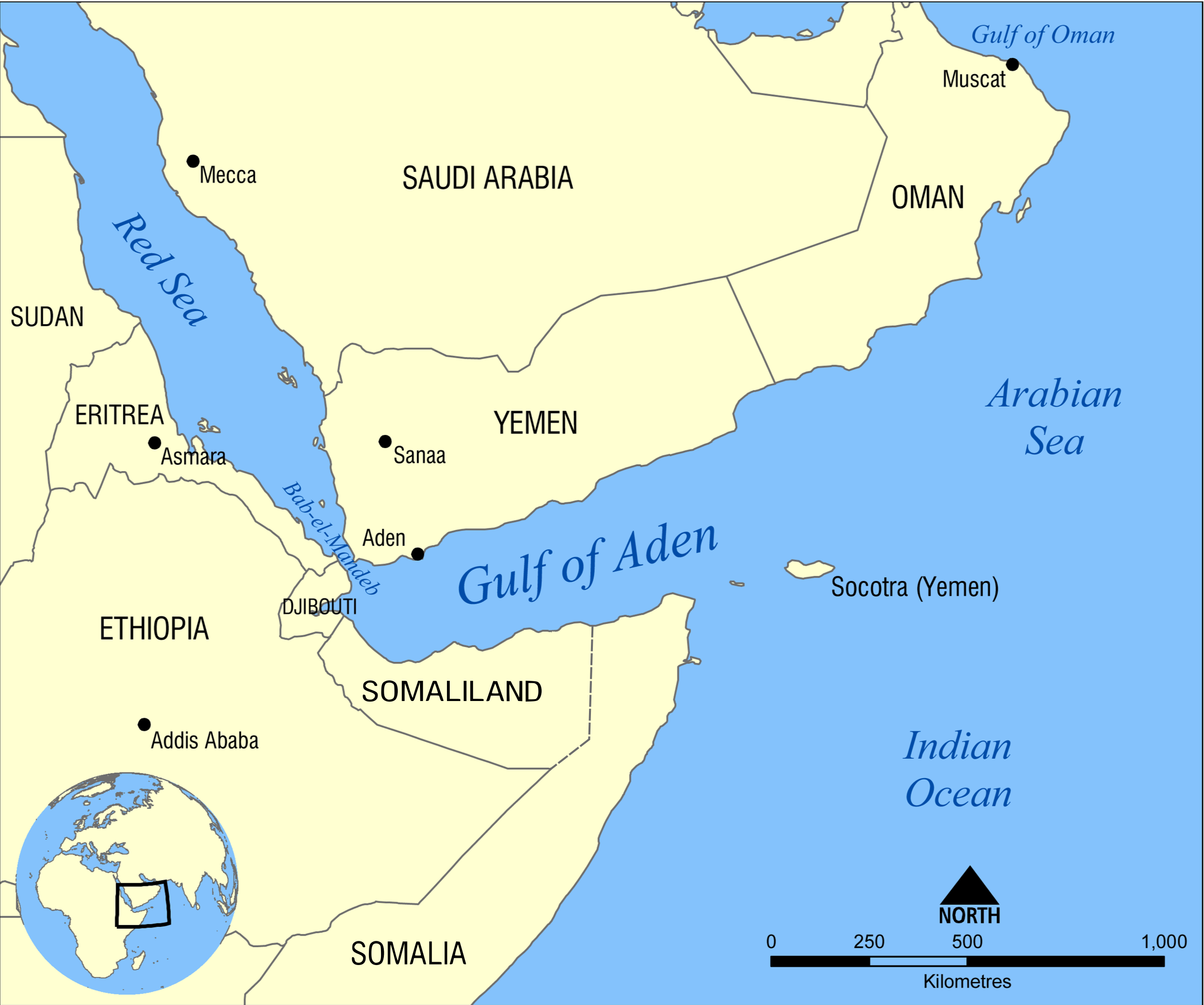The Red Sea’ the Most Saline Bodies of Water in the World

Inlet of the Indian Ocean between Africa and Asia, the Red Sea is one of the saltiest bodies of water in the world.
The Bab el Mandeb sound and the Gulf of Aden provide access to the ocean towards the south.
The Sinai Peninsula, the Gulf of Aqaba, and the Gulf of Suez (which leads to the Suez Canal) are located in the north. Since ancient times, the sea has played a significant navigational function.
The Red Sea, which is a portion of the Great Rift Valley, has a surface area of approximately 174,000 square miles (450,000 km2):
Approximately 1,200 miles (1,900 km) long and approximately 190 miles (300 km) broad at its widest point.
There are huge shallow shelves, known for their marine life and corals, as well as a maximum depth of 8,200 feet (2,500 m) in the middle median trench and an average depth of 1,640 feet (500 m).
More than 1,000 invertebrate species and 200 soft and hard coral species call this tropical sea, the northernmost in the world, home.
Red Sea has been designated as a “Global 200” ecoregion by the World Wide Fund for Nature, the biggest independent conservation organization in the world. As a result, it is regarded as important for conservation.
Also Read: The Great Rift Valley Africa

History of The Red Sea
In order to develop trade routes to Punt, the Ancient Egyptians launched the first known exploration trips of the Red Sea.
There were two of these expeditions, one about 1500 B.C.E. and the other around 2500 B.C.E. Both required lengthy trips via Red Sea.
The Israelites miraculously crossed a body of water that the Hebrew text refers to as Yam Suph and is commonly known as the Red Sea in the biblical book of Exodus.
Exodus 13:17–15:21 tells the story of the Israelites’ flight from Egyptian slavery.
Darius I of Persia launched reconnaissance trips to the Red Sea in the sixth century B.C.E., which helped to expand and improve navigation by identifying several dangerous rocks and currents.
Between the Nile and the Suez end of the Red Sea, in the north, a canal was constructed.
Alexander the Great dispatched Greek naval expeditions to the Indian Ocean via the Red Sea in the latter fourth century B.C.E. Greek explorers and explorers continued to gather information about the Red Sea.
In the second century B.C.E., Agatharchides gathered data on the ocean.
The ports and shipping lanes of the Red Sea are thoroughly described in the Periplus of the Erythraean Sea, which was written somewhere in the first century C.E.
In the Periplus, Hippalus first learns how to go directly from the Red Sea to India
Beginning with Augustus’ rule, when the Roman Empire seized control of the Mediterranean, Egypt, and the northern Red Sea, the Red Sea was preferred for Roman commerce with India.
The road had been utilized by earlier states, but under the Romans, travel on it increased. Chinese exports were brought into the Roman realm through Indian ports.
The Red Sea was the primary route for communication between Rome and China, but the Aksumite Empire cut off that channel about the third century C.E.
The Red Sea played a significant role in the spice trade route throughout the medieval era.
France accused Napoleon Bonaparte of conquering Egypt and seizing the Red Sea in 1798.
Despite his mission’s failure, the engineer J.B. Lepere, who participated in it, revived the canal design that had been envisioned under the Pharaohs’ rule.
Many canals were constructed in antiquity, but none of them stood for very long.
The Suez Canal
November 1869 saw the opening of the Suez Canal. At that time, the trade posts were shared by the British, French, and Italians.
In the years after the First World War, the posts were progressively taken down. Following World War II, the United States and the Soviet Union used their influence as oil tanker traffic increased.
However, the Suez Canal was shut down from 1967 to 1975 as a result of the Six Day War.
Today, the Suez Canal has never regained its dominance over the Cape route, which is thought to be less susceptible, despite patrols by the main marine fleets in the seas of the Red Sea.
Also Read: Facts About River Nile in Egypt’ The Longest River In The World
Living Things in the Red Sea
The environment of the Red Sea is abundant and diversified. More than 1,100 different fish species have been identified in the Red Sea, with around 10% of them being unique to the region.
There are also over 75 deepwater fish species included in this.
The 2,000 km (1,240 mi) of coral reef that stretches down its shoreline, which is 5000–7000 years old and primarily made up of stony acropora and porites corals, is partially responsible for the region’s remarkable variety.
The reefs occasionally create platforms, lagoons along the shore, and other structures like cylinders (such as the blue hole at Dahab).
Pelagic red sea fish species, including several of the 44 species of shark, also frequent these coastal reefs.
Ras Mohammed National Park was established in 1983 as a result of the Egyptian government’s recognition of the region’s unique biodiversity.
The laws and guidelines regulating this region safeguard the indigenous fauna, which has grown to be a top draw for tourists, particularly scuba divers.
Divers and snorkelers should be aware that while the majority of Red Sea species are harmless to people, a small number can be dangerous.
Mangroves, salt pans, seagrass beds, and salt marshes are examples of other maritime environments.
Mineral Assets
The following are the main components of the Red Sea sediments in terms of mineral resources:
Siliceous fossils, foraminifera, pteropods, and nanofossils are examples of biological components.
Tuffites, volcanic ash, montmorillonite, cristobalite, and zeolites are among the ingredients of volcanoes.
Terrible components include quartz, feldspar, rock shards, mica, heavy minerals, and clay minerals.
Sulfide minerals, aragonite, magnesium-calcite, protodolomite, dolomite, quartz, and chalcedony are examples of authentic minerals.
Magnesite, gypsum, anhydrite, halite, and polyhalite are evaporite minerals.
Fe-montmorillonite, goethite, hematite, siderite, rhodochrosite, pyrite, sphalerite, and tourism brine precipitate
Ras Mohammed, the SS “Thistlegorm” (shipwreck), Elphinstone, The Brothers, and Rocky Island in Egypt, Dolphin Reef in Eilat, Israel, and lesser-known diving spots in Sudan such Sanganeb, Abington, Angarosh, and Shaab Rumi are just a few of the sea’s excellent dive sites.
Following the explorations of Hans Hass in the 1950s and Jacques-Yves Cousteau subsequently, Red Sea gained notoriety as a highly sought-after diving location.
In the region known as the Red Sea Riviera, popular vacation destinations include Sharm-El-Sheikh, Hurghada (and more recently, Marsa Alam), and Dahab in Egypt, as well as Eilat in Israel.
Also Read: Inside Pyramids of Khufu
The Red sea in map

Neighboring Nations
Red Sea is bordered by the following nations:
Egypt’s northern coast
Israel
Jordan
Saudi Arabia’s eastern coast
Yemen
Western shore: Egypt Sudan
Eritrea
Djibouti Eritrea is on the south coast.





